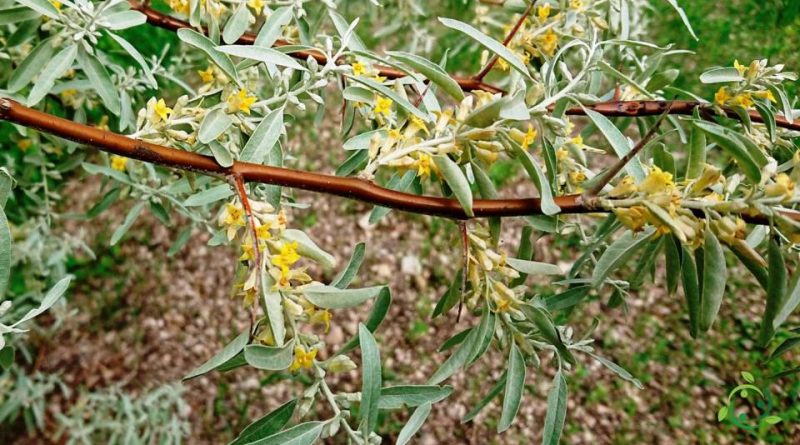Reproduction of the Russian olive
Reproduction of the Russian olive
The Russian olive or silver berry, wild olive (Elaeagnus angustifolia L.) is a tree of the Elaeagnaceae family native to Asia.
Suitable breeding habitat –
Elaeagnus angustifolia is a plant native to western Asia and growing in an area that includes: Eurasia – Belarus, Moldova and western Russia through the Caucasus and Turkey up to eastern Siberia, Mongolia, China, Central Asia and northern India.
This plant was then introduced in Europe in the seventeenth century and today it is widely used as an ornamental plant.
Its natural habitat is that of streams and along the banks of rivers; in Turkey it is found at altitudes of up to 3,000 meters.
Propagation –
The Russian olive in nature tends to grow along watercourses, coasts, dunes where it does not fear high saline concentrations.
This plant, which blooms in June with small tubular flowers, at the axil of the very fragrant yellow and silvery leaves, subsequently produces fleshy, silvery yellow, sweet ovoid fruits.
For its cultivation it grows well in any type of fertile soil, except the calcareous one and, in any case, well-drained soils are preferable as it does not tolerate water stagnation. It is resistant to wind and marine climate but needs full sun.
It should be remembered that, in addition to being a very rustic plant, able to survive in very poor soils where other plants would die and, also able to enrich the soil as it performs the nitrogen-fixing function.
Propagation can occur by seed.
The seed should be sown in an unheated seedbed as soon as it is ripe. Stored seeds can be very slow to germinate, often taking more than 18 months. Warm stratification for 4 weeks followed by 12 weeks of cold stratification can aid germination.
The young seedlings are then placed in single pots and transplanted when they are at least 15 cm high.
It can also propagate more quickly by cuttings. The cutting should be obtained from semi-mature wood, 7 – 10 cm. the suitable period is mid-summer in a shaded area and with constant maintenance of humidity.
Wood cuttings of the current year can also be prepared; in this case the length must be 10 – 12 cm and the period is autumn.
However, the percentage of rooting of the cuttings is very low and the use of rooting hormones may be useful.
The plants begin to flower and bear fruit from the age of 3.
Ecology –
Elaeagnus angustifolia is a plant that plays an important ecological role in its natural habitat.
Caterpillars of the Lachana alpherakii moth use it as a host plant. The fruit is easily eaten and the seeds disseminated by many bird species.
In some where it was introduced, such as in North America at the end of the 19th century, it is considered an invasive species in many places because it thrives on poor soils, has high seedling survival rates, matures in a few years and exceeds native vegetation. It often invades the riparian habitats where it replaces the cottonwoods. Its fast-spreading root system can make it pest-like.
However, this plant can find interesting introduction, with careful study of its invasiveness, for its properties.
In Iran, the dried fruit powder is used mixed with milk for rheumatoid arthritis and joint pain. It is also one of the seven objects used in Haft Seen or the seven ‘S’, which is a traditional table of the Nowruz, the traditional celebration of Persian spring. There is evidence to support the beneficial effects of the aqueous extract of this plant in reducing the symptoms of osteoarthritis with an efficacy comparable to that of acetaminophen and ibuprofen.
The fruits can be eaten fresh or used for the preparation of juices, jellies, sorbets, concentrates and oil. The fruits have anti-inflammatory properties useful in the treatment of phlegm, cough, chronic cough, inflammation of the respiratory tract, rheumatoid arthritis and joint pain in general.
The plant is also cultivated for ornamental purposes as an alternative to the classic olive tree as it is much more rustic and resistant to frost, drought and high salt concentrations; also used for consolidating banks, slopes, unstable sandy soils and for the formation of windbreak hedges.

